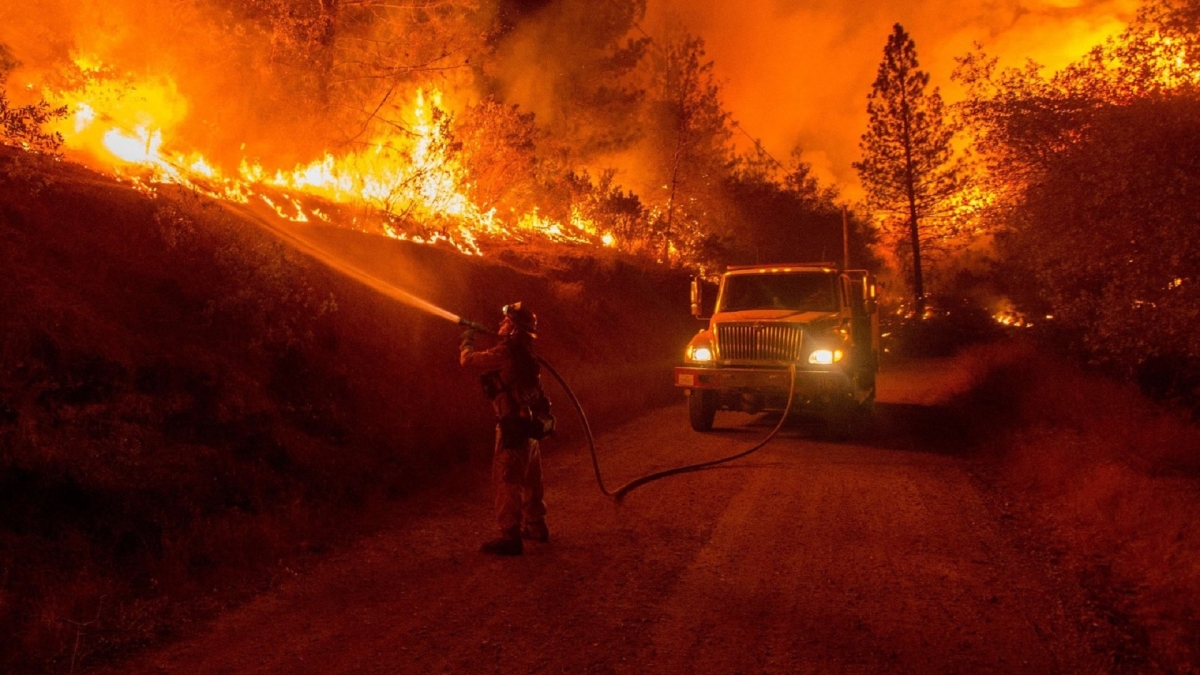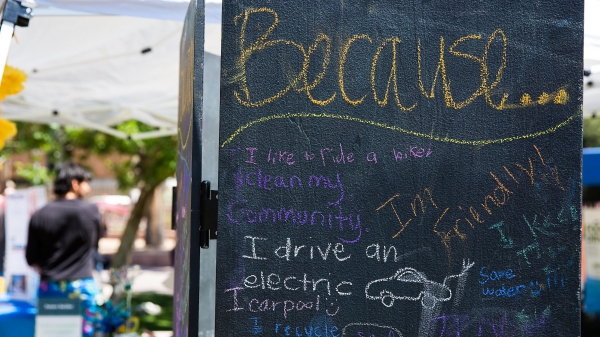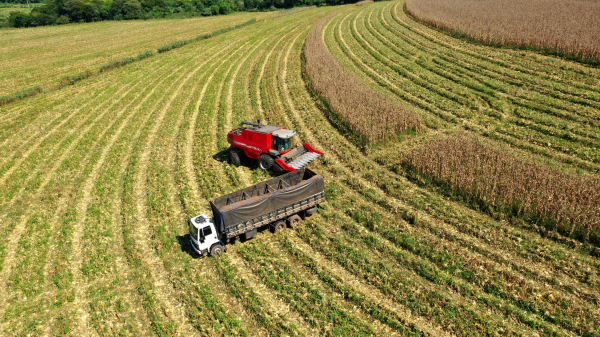What does it take to evacuate a town?
ASU emergency-response experts discuss the operational challenges, dangers involved in moving people away from a wildfire

Wildfires spout gouts of flame. Air tankers roar above treetops. Radios crackle, and the sun vanishes behind curtains of black smoke.
All are stock images of fire season in the West. What’s usually missing are lines of cars snaking out of town and despondent people cradling cats in high school gyms.
Evacuating towns is as important as containing the inferno, but it rarely gets attention.
On Tuesday, a massive wildfire west of Yosemite National Park in northern California nearly doubled overnight, forcing 4,000 people to flee the town of Mariposa.
We talked to emergency-response experts at Arizona State University about what it takes to empty a town.
“In general, community-scale evacuations are significant operational challenges,” said Brian Gerber, director of the Emergency Management and Homeland Security program in the College of Public Service and Community Solutions. “Moving large numbers of people out of harm’s way is not an easy task — and can be a danger as the evacuation process itself can put people at risk of harm.”
There are two main considerations in an evacuation, said Scott Somers, a professor of practice with the College of Public Service and Community Solutions with more than two decades of public-safety and emergency-management experience.
First, how do you get people out of harm’s way? Second, where and how do you shelter them?
Usually evacuations begin as a local responsibility, Gerber said. Places where dangers that might cause an evacuation are significant (wildfires in forests, hurricanes on coasts) usually plan and prepare for them.
“Where the risk of evacuation is real, most communities devote meaningful local government resources to preparing for such contingencies,” Gerber said.
When hell breaking loose is imminent, the incident commander (the person responsible for all aspects of an emergency response) works with local law enforcement to identify who is at the greatest risk. After that, it’s mostly up to law enforcement.
“Communications issues — such as making sure the general public knows when to evacuate and what routes to use — are always major challenges,” Gerber said. “Lots of communities have adopted technical solutions such as reverse-911 calls to make sure the public is notified quickly and efficiently and are given the proper guidance.”
Radio and TV stations pass along instructions as well.
“Increasingly we’re seeing evacuation and safety information provided through social-media channels, particularly Facebook and Twitter,” Somers said.
The Emergency Alert System — that creepy sound most people only hear as a test on the radio — is used. It was founded for nuclear war (“Clearly it’s never been used for its original intention,” Somers said), but it still has its value.
“It won’t reach everybody,” Somers said. “You use as many methods as possible.”
Police and firefighters sometimes go door to door, too. Because it’s the 21st century, there are emergency-alert apps. The American Red Cross has an app that will push alerts to phones and oftentimes include evacuation routes and shelter info.
“It’s really important for folks to pay attention to evacuation routes,” Somers said.
Some routes may be swollen with firetrucks. Other routes might be overrun by fire or about to be engulfed. An issue with the evacuation of the Arizona town of Mayer in late June was the fact that there aren’t that many ways to get in and out of the hamlet.
“The issue with Mayer (was) not with numbers, but some of the challenges are limited access and egress,” Somers said. “If people leave too late, they might not get out.”
Local governments need to be committed to emergency preparedness and blunting hazards, Gerber said. And people need to follow the direction of police and fire without second-guessing them.
“The job of local first responders is made difficult when evacuation orders are not followed by the general public,” he said.
Top Photo: Courtesy of Pixabay.com
More Environment and sustainability

Earth Day celebrations focus on making our planet a priority
On April 22, Earth Day is celebrated across the country and in nearly 193 countries around the world. Arizona State University will be part of that celebration. The university has planned more…

ASU scientist studies how bans, regulations on food technology affect consumer acceptance, perceptions
How do people process scientific developments with outside influences, warnings, biases and others’ opinions filtering in? That’s the question Caitlin Drummond Otten, environmental social scientist…

ASU team's research leads to new law protecting mobile-home dwellers
Arizona Gov. Katie Hobbs signed a law earlier this month that guarantees mobile-home owners’ right to install cooling measures, thanks in large part to the work of an Arizona State University team.…